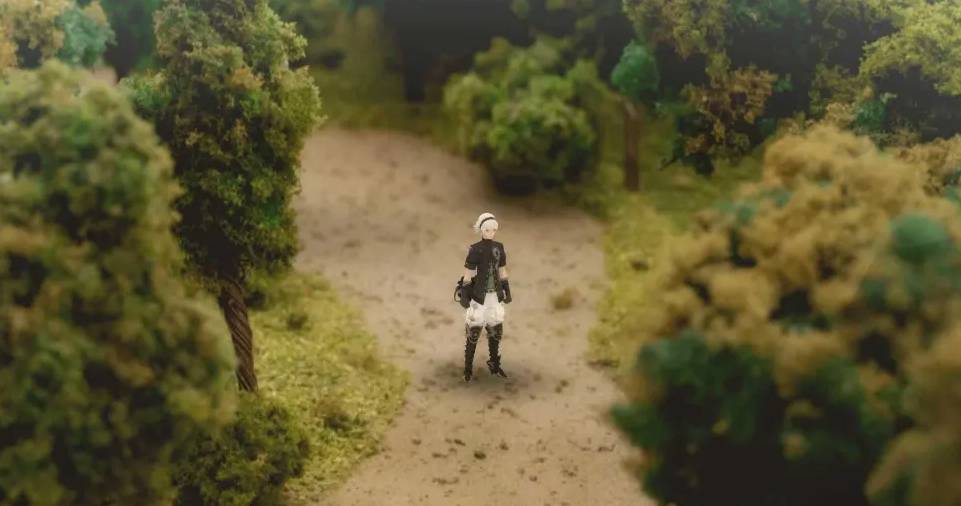
Fantasian’s world, for example, is made up almost entirely of 3D-scanned dioramas – a unique take on the pre-rendered backgrounds of the PS1-era Final Fantasies. By the time you’re into quests that ask for your party to be in your mid to late 40s, the game’s challenge skyrockets, and it never really lets up.Īgain, I personally never found that to be a problem, but it stands out when so much more of the game would clearly appeal to players that might otherwise only want to play a game with a much less stark difficulty, as seen in the game’s opening hours. This isn’t especially challenging at first, but the further into the game that you get, the more ruthless the challenge becomes and the more pitch-perfect your strategy needs to be. In practice, every battle is a puzzle, and you’re forced to consider the right tools – the right party composition and equipment – for the job. Even ideas that might be reused in later encounters are never quite the same, and when you’re offered the opportunity to battle bosses a second time in later sidequests, they’re given a new spin to make the encounters feel fresh again. Another requires you to match up your elemental attacks with the color of the knights stationed behind him to prevent the damage coming out from the encounter to be too much to handle.Įvery boss has a gimmick like this, and no two mechanics overstay their welcome. If you attack them, your entire team will take a ton of damage. One memorable side boss requires players to make use of a certain character’s ability to vacuum up mobs into a location that he sets down on the battlefield, so you can attack the boss without running afoul of his explosive friends. Certain bosses will even employ mechanics that will block attacks unless properly aimed and timed. While some melee attacks can pierce, other enemy types can block piercing attacks from passing through them. One of the basic elements of Fantasian’s battle system is that while melee attacks will shout out in a straight line – magic can be curved, offering you the ability to bypass groups of enemies.

It’s more like you need to find the opening to give yourself a chance at victory in the first place, rather than finding a catch-all solution to prevent you from having trouble.Įach of the game’s boss gimmicks are unique, but many of them take into account timing, positioning, & the trajectory of your attacks. Certain bosses will require very specific strategies using unique party combinations – and while it’s a lot of fun figuring out how the game wants you to tackle a boss, simply knowing the intended solution isn’t enough to make these battles a cakewalk. While the game eases you into the battle system and how each character plays in the first 15 to 20 hours of the story, the last 30 to 40 hours expect near-perfect execution when it comes to tackling bosses. In this second part of the game, players are given more or less the entire world for them to explore and can tackle a variety of quests in any order. Going through the linear early portion of the game, you won’t have too much trouble making it to the clearly World of Ruin-inspired latter half, where players are instead tasked with tackling the challenges at their own pace. While I played through the game on an Apple TV, one would normally assume that a game exclusive to mostly mobile platforms would have a much more forgiving difficulty curve.īut enough talking around it – Fantasian is a very, very difficult RPG. Fantasian is an Apple Arcade exclusive, only playable on Apple devices – primarily mobile platforms, like iPhone and iPad. It’s a weird situation for a game to be in, and even more baffling considering the platforms that it has released on. The problem, instead, comes from how much of Fantasian might seem to appeal to a wider audience, only for one or two key design philosophies to severely limit who will end up enjoying the title as a whole.


How do you tackle a game where aspects of its core design will be poison for a wider audience, even if those decisions aren’t inherently poor– and, in fact, might even be welcomed by a specific type of player? Challenge on its own doesn’t make a game bad, and I believe there’s a space in the industry for RPGs of all types. That’s maybe a bit of an odd start for a review, I must admit, but that’s the same challenge I’ve run headfirst into when attempting to articulate my thoughts on what might well be industry legend Hironobu Sakaguchi’s final project.


 0 kommentar(er)
0 kommentar(er)
